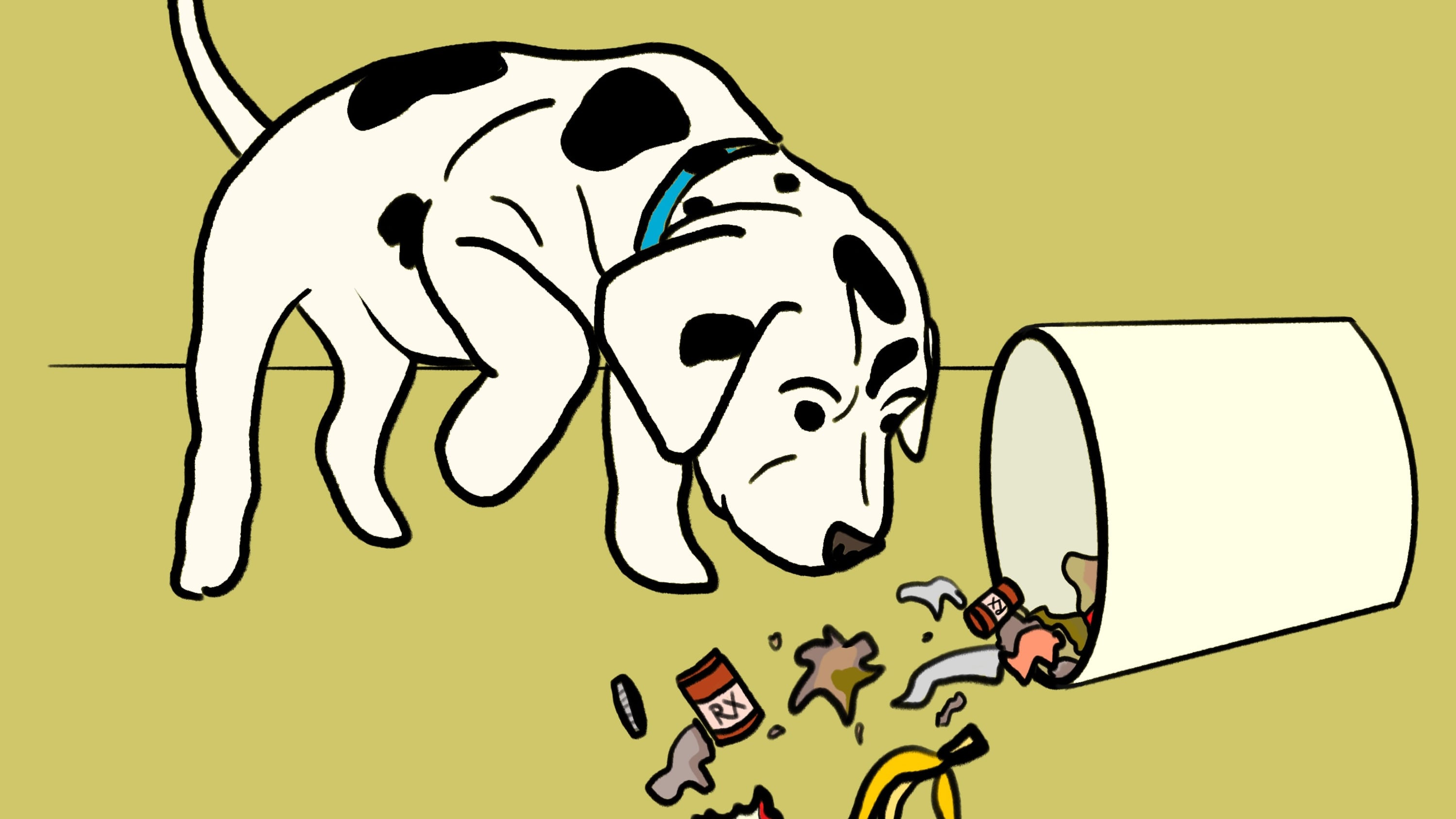One sunny morning last week in the off-leash area of Sellwood Riverfront Park in Southeast Portland, dogs socialized, chased balls and took dips in the Willamette. Chris Lifford, a cook who lives nearby, sat in the grass with his 14-year-old pit bull mix Harley and his 8-year-old Taiwan dog Maya.
Maya was sniffing around, tail up high, but in November she got so sick she had to go to the animal hospital. The cause? Accidental medication exposure via a cat poop snack.
“That drugged her up for a few days,” Lifford says. “I don’t know what the cat was on.”
Neither did the veterinarian, but they got Maya to vomit and stabilized her. Maya’s eyes were dilated for 12 hours.
Despite widespread fears in the city, it wasn’t fentanyl.
According to a spokeswoman for DoveLewis Veterinary Emergency & Specialty Hospital in Northwest Portland, canine ingestion of fentanyl typically results in pinpoint pupils. (Cats, however, get dilated pupils from the opioid.) But as the human epidemic of fentanyl use continues, four-legged companions have sometimes become unwitting users.
In mid-September, local television news ran with the story that three dogs had overdosed on fentanyl in previous months. While true, DoveLewis director of community engagement Tess Payne says the reports may have unnecessarily alarmed Portlanders into thinking their dogs were in danger of eating blues while walking down the sidewalk. It is not a new trend, and there was no big uptick in September.
“We at DoveLewis are not seeing anything outside of the norm right now,” Payne says. “Yes, it’s dangerous. Yes, we want pet owners to be aware. But honestly, the greater danger is pets ingesting household drugs as opposed to picking up fentanyl on the streets.”
DoveLewis veterinarians say about two patients come through the doors with suspected fentanyl ingestion out of the 400 to 500 animals the hospital treats in a week. Fentanyl exposure is rare, whereas several pets a day are treated after getting into other things toxic to animals, such as grapes, chocolate, weed gummies or household medications.
Staffers at Northwest Neighborhood Veterinary Hospital say they have not seen any cases of fentanyl ingestion recently.
Such cases in pets started decades ago when the drug started being prescribed in patch form, Payne says. Pets would rummage through the trash—as pets do—and have contact with or eat the patch. Fentanyl can also be ingested via bodily fluids, as from licking feces on the ground. Owners should do their best to monitor their pets closely on walks to avoid outdoor exposure to toxins, Payne says. This can be difficult, she acknowledges since “pets can move quickly and get into stuff really fast.”
Signs of fentanyl ingestion in a pet appear quickly and may include extreme lethargy, difficulty breathing, stumbling or collapsing when trying to walk, changes in pupils, slower respiratory rate and seizures. Without appropriate intervention, the pet could die.
Treatment could be anything from inducing vomiting (as in the case of Maya the Taiwan dog), giving the animal activated charcoal like doctors do in human medicine, or administering intravenous fluids. In the case of fentanyl, veterinarians might use Narcan to reverse the effects of the drug. Anecdotally, Payne has heard of owners giving their dogs a dose of Narcan at home in a life-or-death situation, but those dogs should still come to the hospital afterward for treatment.
“Pet owners should trust their instincts,” Payne says. “If they see a bottle and they are worried about it, don’t doubt yourself. Just call your veterinarian or the nearest emergency veterinarian.”
The American Society for the Prevention of Cruelty to Animals also runs a 24-hour animal poison control hotline. Owners who suspect their pet may have ingested a poisonous substance can call 888-426-4435.
Lifford, at Sellwood Riverfront Park, says Maya does all kinds of “little naughty things.” If there were an empty pill bottle in the trash, she would surely chew it up and get the remnants of those chemicals, he says.
He does not plan to change his pets’ routines in order to protect them from accidental drug ingestion, despite the fact that his neighbor’s son smokes fentanyl (the drug regularly comes within about 5 feet of his front door). However, Lifford says he could see himself making more of an effort to clean up his neighborhood.
“It’s going to be random,” he says. “You’re going to turn a corner and he’s going to lick something.”
